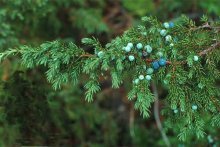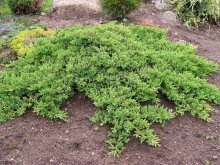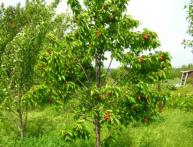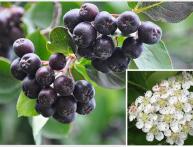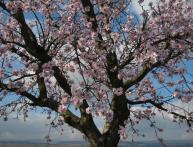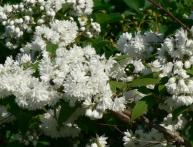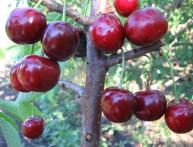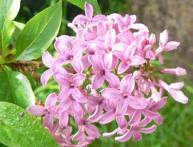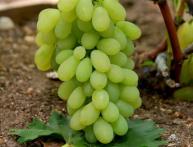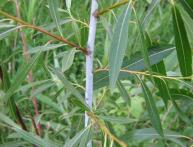Juniper and its species: where can it be found and in what conditions does it grow?
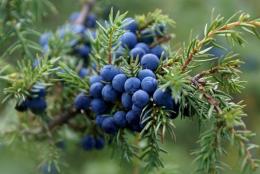
One of the representatives of evergreen coniferous shrubs and trees is juniper. This genus of plants includes about 60 different species. Their usual habitat is the northern hemisphere of the Earth, covering the polar zone and stretching to the tropical mountains.
Content:
- Distribution of juniper in nature
- Where does juniper grow in Russia, its diversity
- Where and what types of juniper grow in Ukraine?
Distribution of juniper in nature
The distribution area of juniper is quite wide - it starts from the polar zone in the north and extends to the tropical mountains of the northern hemisphere in the south. Juniper itself can be found in a light deciduous or pine forest, among the lower and middle tier of plants. It often grows in sand, on drought-prone mountain slopes or slopes covered with stones. It can also be found on hilly mountain formations.
He not capricious at all to the ground on which it grows. Thanks to its strong and robust roots, it is able to obtain water and inorganic nutrients from even the poorest and driest soils. But if you decide to acquire this evergreen plant, you should still use special fertilizers for coniferous plants.
This genus of needles is characterized by high shade tolerance and drought resistance.Places that are too flooded are not the most favorable for him. He's quite frost resistant and even at a temperature of -40 this representative of the flora is able to survive.
Where does juniper grow in Russia, its diversity
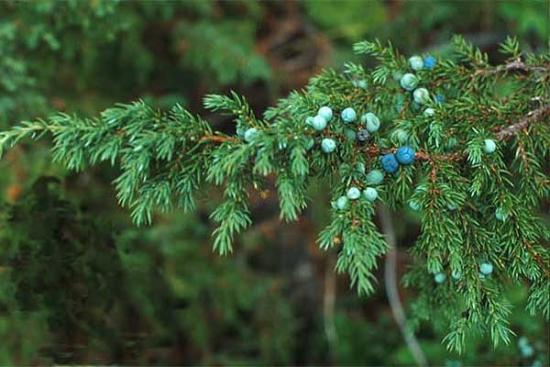
- In Russia, juniper is found in pine forest belts, less often in mixed forests, also on mountain slopes or pastures.
- In the European part of Russia, juniper grows in the forest-steppe zone.
- The Western and Eastern parts of Siberia are also full of this kind of needles.
Distribution area of juniper borders with Finland, further moving to the mouth of the Yenisei, and from it to the northern part of the pine forests of the Omsk and Chelyabinsk regions. The territory of the Southern Urals, the coast of the Belaya and Kama, right up to Kazan itself is also rich in this representative of the flora. The area along the upper reaches of the Seversky Donets is also not deprived of this coniferous plant.
Mostly common juniper is found here - a low (up to 65 cm) creeping shrub, with a diameter of up to 2 m. In the European part and central Asia - a lower (from 1 to 1.5 m) shrub, Cossack juniper, which grows strongly in a short time and forms strong, tight thickets. The Siberian sandy shores and mountain slopes are rich in Dahurian juniper, even smaller (up to 0.6 m), this representative of the Cypress family.
Where and what types of juniper grow in Ukraine?
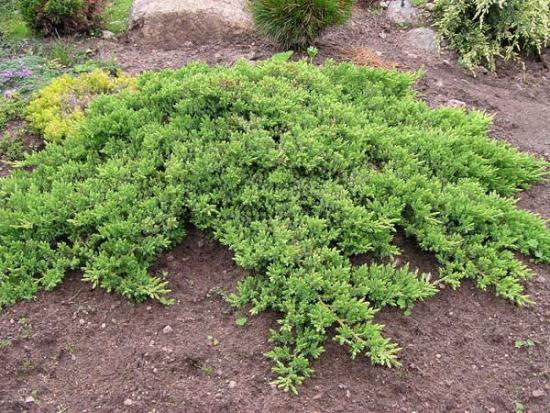
- Of course, the territory of Ukraine richest in juniper is the Crimean Mountains.
- Also found common juniper and Cossack juniper also on the slopes of the Carpathians, but much less often, since in the Carpathians the climate is more humid, and as mentioned above, excessive humidity is not the most favorable condition for juniper.
As you know, the Crimean mountains are rocky, the climate there is relatively dry and the rocks are quite fragile, which do not crumble thanks to the powerful roots of the high juniper common there, which grows at an altitude of 400-450 m above sea level on the slopes of the south of the Main Ridge. Prickly juniper dominates a little higher, at a level of about 750 m above sea level, on the slopes of the same Main Ridge, as well as in the foothills.
The northern slopes of the Main Ridge (750 - 900 m above sea level) are filled with stinking juniper. The above species are trees with a height of 5 to 25 m. Cossack juniper, in turn, is a creeping shrub, like most of those junipers that are rich in the lands of Siberia, the European part of Russia and central Asia, the coast of the Seversky Donets. It fills almost the tops of the Crimean mountains.
The mountain slopes and hills of the Earth's northern hemisphere are full of various coniferous plants, including juniper, which, although not picky about external conditions, does not like excessive moisture.
It, like many other coniferous plants, has medicinal properties, enriching the air, in addition to oxygen, with other useful substances. Over the entire period of their existence, these trees and shrubs have evolved, they have adapted to environmental conditions in such a way that the higher they are located above sea level, that is, the more they are blown by winds and succumb to other influences of natural forces, the more they are deformed - they become more low.
And on the tops of the mountains there are even shrubs, they have creeping branches, strong, branched roots that can hold the soil and extract water and nutrients from the poor soils of mountain rocky and dry slopes.
Educational video about planting juniper and caring for it:
Interesting information about the vegetable garden

